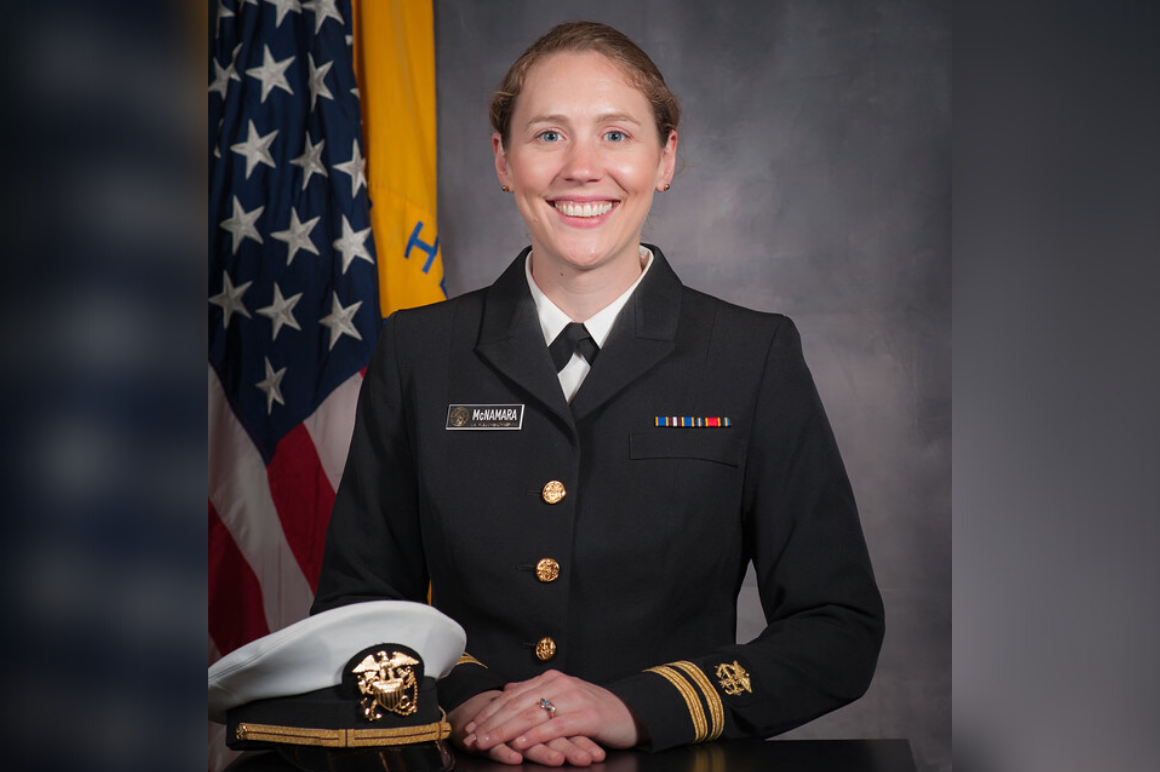Combining Workplace Safety and Global Health to Improve Lives

December 16, 2019
An alum based in the Greater Washington, D.C. area works to improve environmental and occupational health.
Based in Bethesda, Maryland, Lieutenant Kathryn McNamara, Environmental and Occupational Health (EOH) MPH ’16, is an Industrial Hygienist at the National Institutes of Health (NIH) and an Environmental Health Officer for the Commissioned Corps of the United States Public Health Service where she is assigned a variety of domestic and international assignments.
“I love what I do — I get to be involved in a broad range of safety issues from biological hazards and laboratories, to construction and industrial processes, to protecting patient health,” she says.
McNamara works in the NIH’s Division of Occupational Health and Safety where she manages industrial hygiene and safety programs for their community of patients, researchers, and support staff. Each day on the job, she is presented with new obstacles that workers face and opportunities to improve their wellbeing. “I enjoy the unpredictability of my work — I never know what my workday will bring,” she says.
This past summer, the Public Health Service sent McNamara and a team of officers to south Texas to provide healthcare to underserved and at-risk populations as part of the Operation Lone Star mission. They partnered with Remote Area Medical, a national nonprofit, to set up four clinics that provide free, quality medical, dental, and vision care. “In one week, the clinic I was stationed at cared for more than 1,700 patients,” she says. “It was an incredibly motivating and humbling experience.”
McNamara’s role at the clinic entailed preventing bloodborne pathogen exposure from dental treatment, hazardous waste disposal, non-ionizing radiation from x-rays, and heat-induced illness from the summertime climate. She also ensured the clinical team were in good health as they typically worked demanding 12-hour days seeing patients.
“I joined the Public Health Service because I believe in their mission to serve vulnerable populations,” says McNamara. “My education at Dornsife exposed the inequalities in our healthcare system and taught me that environmental justice should be central to my public health worldview. Partnering with local healthcare organizations to strengthen their capacity and provide vital preventative medical services is an opportunity to contribute to a larger vision of a more just world.”
Before beginning her career in public health, McNamara saw firsthand how workplace hazards can deeply impact communities while teaching English in Indonesia after completing her undergraduate degree. While abroad, her neighbor was killed by falling off an unprotected ladder at his construction job, which left his family without a main source of income. “I pursued an EOH MPH to honor my neighbor’s legacy,” she says.
The MPH program at Dornsife gave McNamara opportunities to gain valuable, real-world experience in EOH. A major component of this practical training is the Integrated Learning Experience (ILE).
With the help of mentors Igor Burstyn, PhD, associate professor at Dornsife, and Christopher Peters, PhD, teaching professor at the College of Engineering, McNamara’s ILE involved evaluating the likelihood of exceeding the occupational exposure limit (OEL) for annual ionizing radiation doses and proposing methods for forecasting exposures among workers at the Hope Creek Nuclear Generating Station in Hancocks Bridge, NJ. This research was published in the Annals of Work Exposures and Health.
“Understanding a worker's exposure to ionizing radiation is crucial for predicting their risk of developing cancers and other potential health effects in the future,” says McNamara. The conditions at Hope Creek Nuclear Generating Station are typical of its industry peers in terms of annual ionizing radiation doses, which makes it a valid test subject for predicting worker doses received across the United States.
In the future, McNamara looks forward to further growing in her position at the NIH and remaining committed to the Public Health Service. “I hope to continue to merge my interests in workplace safety and global health throughout my career in public health,” she says.